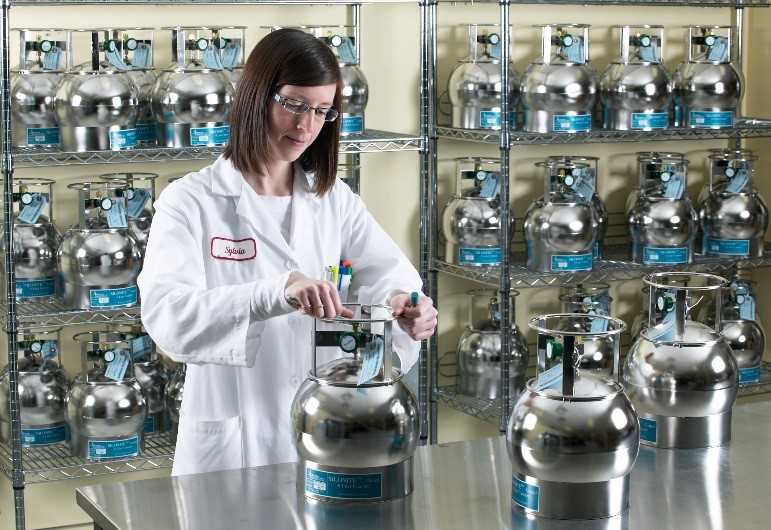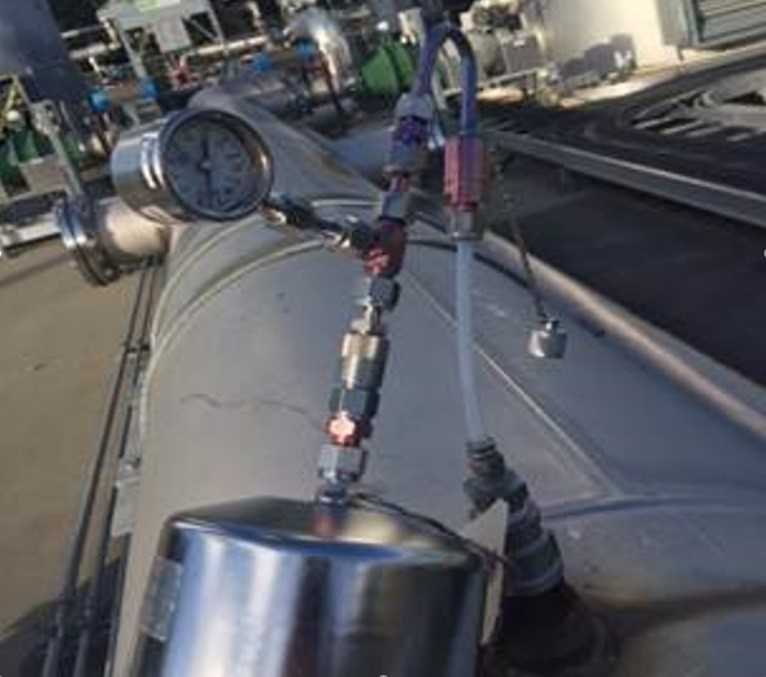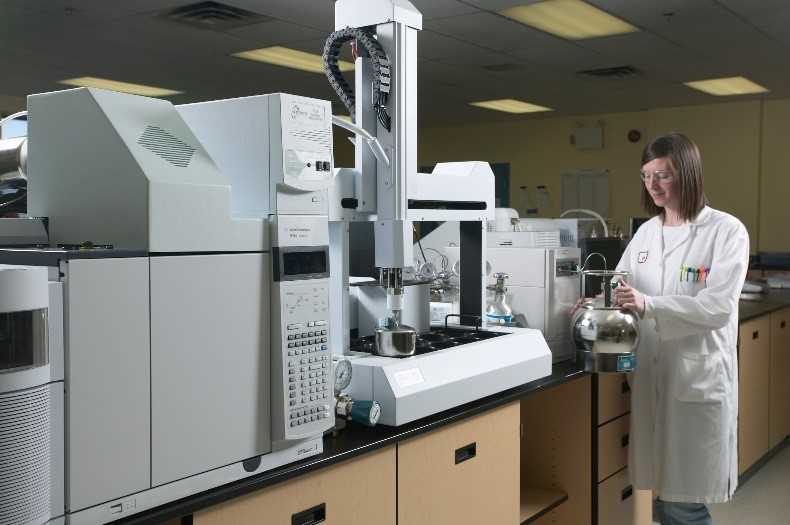EnviroMail 25 Canada
Whole Air Sampling: Verified Silonite™ Canisters & GCMS gives Certainty of Data Quality
In recent years, air sampling with fused silica passivated canisters has become the industry standard best-practice technique for whole air sampling.

Advantages of Canisters for Whole Air Sampling
In recent years, air sampling with fused silica passivated canisters has become the industry standard best-practice technique for whole air sampling.
Canisters offer the simplest and most versatile sampling approach for the analysis of a broad, almost universal scope of testing for gases, vapours, and volatile substances in air, including VOCs (volatile organic compounds), hydrocarbons, fixed gases, reduced sulfur gases, and more.
Canisters are unmatched for their ease of use for air sampling, and they provide a quick and simple way to collect grab samples (4-60 mins) or integrated time-weighted average whole air samples (from 1-24 hrs), depending on the desired sampling interval. Combining fused silica passivated canisters with GCMS detection and individual canister proofing provides unmatched versatility, flexibility, and certainty of data quality for air testing services.
 Preparation of 6L Silonite Canisters
Preparation of 6L Silonite Canisters
Canister Passivation: SUMMA® vs Fused Silica
The inner surfaces of stainless steel canisters require passivation to prevent adsorption and degradation of gaseous and volatile substances due to contact with reactive or catalytic metals, particularly iron. SUMMA® canisters were the first passivated canisters, popularized in 1982 with the US EPA’s first publication of compendium methods for VOCs in air. SUMMA® canisters were passivated by electropolishing and deposition of a thin coating of Nickel Chromium Oxide (NiCrOx). SUMMA® canisters offer reasonable inertness to most VOCs, but only where relative humidity of the air sample exceeds ~20%. SUMMA® canisters are not appropriate for sampling of reduced sulfur gases or for reactive TO-15 substances such as carbon tetrachloride, vinyl acetate, or benzyl bromide (α-chlorotoluene), and can cause false negatives if utilized for the testing of these substances1.
Greatly improved canister inertness became possible in the late 1990’s with the introduction of fused silica passivation techniques (the new "gold standard"), such as Silonite™ or SilcoSteel®), which extended the applicability of canisters to highly reactive compounds such as reduced sulfur gases and all TO-15 VOCs. Fused silica passivations are hydrophobic, resistant to corrosion or etching, and maintain their inertness even with dry air samples to prevent adsorption or reaction of VOCs on canister walls, even after many years of use. ALS Canada uses Silonite™ fused silica passivated canisters exclusively for all canister testing, for assurance of optimal inertness and performance, especially for ultra-trace level testing in support of challenging Canadian vapour standards or indoor air guidelines..
 Tank Head Canister Sampling.
Tank Head Canister Sampling.
Best-Practice Canister Cleaning and Proofing
Since canisters are re-used many times throughout their lifespan, rigorous cleaning protocols involving heating and repeated nitrogen purging and evacuation cycles are required between each use. But to guarantee cleanliness, the proofing protocol used by the lab is just as important as the cleaning process. ALS Canada proofs every individual canister for VOCs prior to re-use (by GCMS testing), and maintains “cradle to grave” records for each canister by serial number. Individual canister proofing records can be provided at any time (even after sampling), for a nominal fee. ALS can always review canister history records if a client wishes to question an anomaly in test results, to confirm presence or absence of trace contaminants prior to sampling. “Batch proofing” (i.e. testing at least one canister per cleaning batch of up to eight canisters) is the minimum standard outlined by EPA TO-15A (Sept 2019), and is a common practice among air testing laboratories, but ALS Waterloo proofs every canister to provide absolute confidence and certainty in all our canister test results. EPA TO-15A endorses verification of every canister as the best practice, which may be necessary for certain studies, depending on QA requirements.
Sampling Considerations & Equipment Options
The recommended canister sampling equipment and volumes are primarily a function of the desired sampling time interval. Discrete “grab” samples can be collected over periods of 4 to 60 minutes using critical orifice flow restrictors and convenient 1.4L Silonite™ or 1L glass Bottle-Vac canisters; grab samples are typically utilized for sampling of soil vapour, biogas, tank heads, or landfill gas, where temporal changes in gas or vapour concentrations are not expected. Integrated time-weighted average (TWA) sampling using 6L Silonite™ canisters is used for ambient and indoor air sampling (residential or industrial) where measurement of average concentrations over longer time periods is necessary (from 1 to 24 hours), utilizing pre-calibrated flow controller
ALS supplies canisters with all valves, flow controllers, and ¼” Teflon tubing and Swagelok fittings needed to collect either grab samples or TWA whole air samples, and to connect to your sampling train. T-samplers can also be provided to connect two canisters together for duplicate sampling (see photo).
 Duplicate Canister Sampling Apparatus.
Duplicate Canister Sampling Apparatus.
ALS Canada Canister Analysis Options
The recommended canister sampling equipment and volumes are primarily a function of the desired sampling time interval. Discrete “grab” samples can be collected over periods of 4 to 60 minutes using critical orifice flow restrictors and convenient 1.4L Silonite™ or 1L glass Bottle-Vac canisters; grab samples are typically utilized for sampling of soil vapour, biogas, tank heads, or landfill gas, where temporal changes in gas or vapour concentrations are not expected. Integrated time-weighted average (TWA) sampling using 6L Silonite™ canisters is used for ambient and indoor air sampling (residential or industrial) where measurement of average concentrations over longer time periods is necessary (from 1 to 24 hours), utilizing pre-calibrated flow controller.

GCMS Analysis Instrumentation for Canisters
Please contact ALS prior to sample collection to discuss any of your air quality testing needs. Ask us for more information about other air testing services such as thermal desorption VOC analysis (see EnviroMail 15), stack sample testing, compressed breathing air analysis, passive sampling, fenceline monitoring, or industrial hygiene test methods.
References
Entech Application Note A-3736-04, Sample Canister Evaluation and Inertness Certification.
Method TO-15A, Determination of Volatile Organic Compounds (VOCs) in Air Collected in Specially Prepared Canisters and Analyzed by Gas Chromatography–Mass Spectrometry (GC-MS), US EPA, Sept 2019.























































